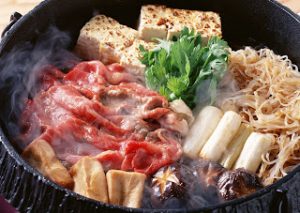Hina-Matsuri(Doll’s Festival)
Hina-Matsuri is an event to pray for the healthy growth of girls on March 3 every year.Families with girls display dolls for Hina Matsuri called Hina-Ningyo.
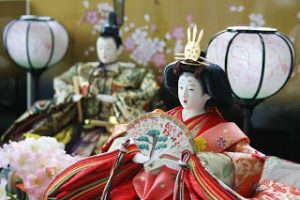
Hina-Ningyo
It was believed that dolls would protect people from sickness or ill-fortune.
Today, at the Hina Matsuri, we eat traditional dishes such as scattered sushi (chirashi-sushi),cherrystone clam soup, sweet white sake(shirozake) and rise cake cubes (hina-arare) .
The following is a recipe of cherrystone clam soup using a liquid seasoning Kappo Dashi.
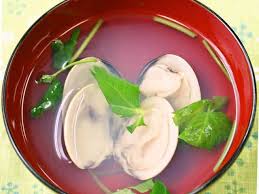
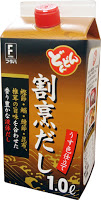
Product Name: DonDon Series Kappo Dashi 1L
Ingredients : Light-colored soy sauce, Dried bonito,
Salt, Sugar, Mirin, Sake, Dried-
sardine, Hydrolyzed fish protein,
Dried bonito extract, Hakkochomiryo,
White soy sauce, Kombu
(Dried seaweed),Dried mackerel,
Shiitake mushroom,
Amino acid (sodium Glutamate),
Shusei(ethyl alcohol), Acidulant
Expiration : 1year from manufacturing date
Produced by FUTABA Co., Ltd.
<Ingredients__4 servingss>
water・・・・・・・・・・ 800ml
Kappo Dashi・・・・・・・40ml
Cherrystone clam・・・・ 8 pieces
Fragrant grass ・・・・・ As you like
○ Let the clams spit the sand out for about 20 minutes.
○ Mix the water and the Kappo Dashi, and cook till its boiled. Then, add the clams.
○ When the clams are opened, turn off the heat.
○ Place the clams and fragrant grass in a serving bowl, and pour the soup carefully.
See you later.
Sukiyaki recipe ~ Beef hot pot ~
Sukiyaki (すき焼き) is a Japanese dish that is prepared and served in the nabemono (Japanese hot pot) style.
It consists of meat (usually thinly sliced beef) which is slowly cooked or simmered at the table, alongside vegetables and other ingredients, in a shallow iron pot in a mixture of soy sauce, sugar, and mirin. The ingredients are usually dipped in a small bowl of raw, beaten eggs after being cooked in the pot, and then eaten.
Generally sukiyaki is a winter dish and it is commonly found at bōnenkai, Japanese year-end parties.
I will teach you how to make delicious Sukiyaki.
You can easily cook using this product.
Dondon series katsuo tsuyu

Click here for details!
<Ingredients_4 servings>
SAUCE (warisita)
DonDon series Katsuo Tsuyu・・・・・10 oz
Mirin (sweet cooking sake)・・・・・・・10 oz
Thin sliced beef・・・・・・・・・・・ 20 oz
Beef lard・・・・・・・・・・・・・・Adequate
Shirataki ・・・・・・・・・・・・・ 5 oz
Winter mushrooms (enokidake)・・・・・5 oz
Leeks・・・・・・・・・・・・・・・ 2
Yaki-tofu (grilled tofu)・・・・・・・・・1 Block
Eggs・・・・・・・・・・・・・・・・4
<How to cook>
① Put 10 oz DonDon series Katsuo Tsuyu and 10 oz Mirin in a pot, place over high heat, bring it to boiling.
② Cut the yaki-tofu into bite size, the leeks diagonally, parboil shirataki, and cut into bite size. Remove the stem tip of the enokidake.
③ Heat a Sukiyaki pan (shallow iron pan), and melt a beef fat.
④ Grill some beef in the pan, add some ① and coat the beef with it.
⑤ Add ② and grill. Dip the beef and ingredients in a beaten egg to eat.
TIPS
After enjoy the Sukiyaki, add rice, some water, and warishita sauce in the pan to make a Beef Ojiya (beef risotto ).
Healthy and tasty!
Miso soup recipe
Miso soup (misoshiru) is a traditional Japanese soup consisting of a stock called “dashi” into which softened miso paste is mixed.
Many ingredients are added depending on regional and seasonal recipes, and personal preference.
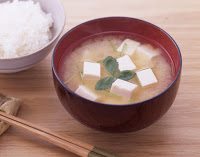
The choice of miso paste for the miso soup defines a great deal of its character and flavor.
Miso pastes (a traditional Japanese seasoning produced by fermenting soybeans with salt and the fungus Aspergillus oryzae, known in Japanese as kōjikin, and sometimes rice, barley, or other ingredients) can be categorized into red (akamiso), white (shiromiso), or mixed (awase).
There are many variations within these themes, including regional variations, such as Shinshū miso or Sendai miso.
If you use Futaba’s dashi pack “Hongatsuo dashi pack” (bonito soup stock pack) you can easily prepare delicious miso soup.
Hongatsuo dashi pack
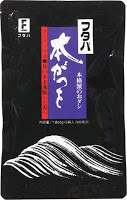
Click here for details!
https://www.nextytrading.com/
<How to cook>
① Drop a pouch of Hongatsuo dashi pack into boiling water.
Cook for 5 minuets over medium heat.
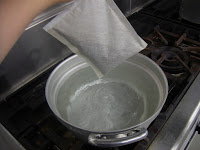
② Remove the pack with ladle gently.
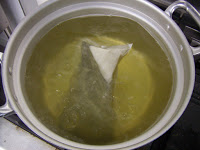
Golden soup of bonito soup stock
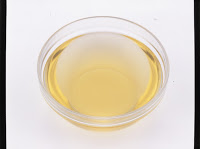
Recommended recipe for miso soup
Pork and vegetable miso soup【Tonjiru】
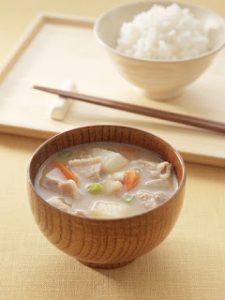
Ingredients_4 servings
Hongatsuo dashi pack soup 【bonito soup stock】 800ml
miso 40g
white giant radish 100g
carrot 50g
onion 50g
pork 100g
<How to cook>
① Cut white giant radish, carrot, onion, and pork in a bite size.
② Cook vegetables in 800ml Hongatsuo dashi pack soup on the medium heat.
③ Add pork when the vegetables are cooked, cook until the pork is tender.
④ Place the strainer in the soup pot, add miso gradually into the soup while softening with some stock and dissolving.
Healthy and tasty!
EHO-MAKI (Happy Direction Sushi Roll)
What is EHO-MAKI?
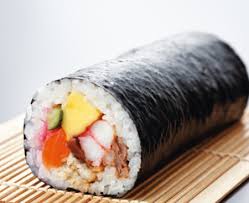
EHO-MAKI is a thick sushi roll, and believed to bring good luck if eaten while facing the year’s good luck direction. The day is called SETSUBUN which is the beginning of spring in Japan, and in 2017 is February 3rd.
The custom originally started in the Kansai area. Now, it came to be eaten on a nationwide scale in Japan..
EHO-MAKI has seven ingredients such as cucumber, shiitake mushrooms, seasoned omelet, teriyaki eel, sweet fish flakes (Denbu) and dried gourd(kanpyo).
It is the length of 8-10cm on the average. But don’t cut when eating.
You have to eat all in one go while facing silently toward the year’s good luck direction with your eyes closed.
This year’s good luck direction is North – North – West.
May you be happy!
See you later.
Various kinds of ramen part 2
担々麺 Tantan-men
Tantan-men is a noodle dish originating from chinese sichuan cuisine. It consists of a spicy sauce containing preserved vegetables, chili oil, Sichuan pepper, minced pork,Sesame paste, and green onion served over noodles.
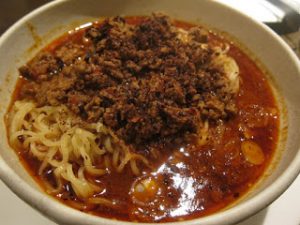
酸辣湯 Sanratanmen
Sanratanmen (noodles in hot and sour soup) is very similar to Sichuan hot and sour soup served with long noodles. The topping ingredients are sauteed and a thickener is added, before the mix is poured on the soup and the noodles.
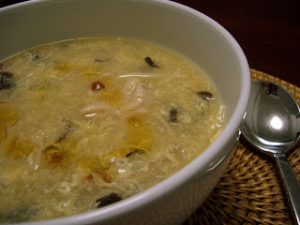
冷やし中華 Hiyashi chuka
Hiyashi chuka is chilled ramen noodles with various toppings served in the summer. Toppings are usually colorful cold ingredients and a tare sauce.served with a vinegary soy dressing and karashi (Japanese mustard).
Popular toppings are strips of tamagoyaki (egg omelette), carrot, cucumber, ginger, ham, and chicken, or may also contain barbecued pork.
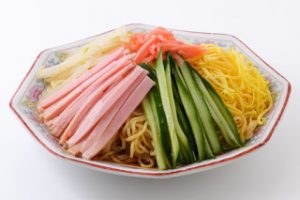
タンメン Tan-men
Tan-men is a mild, usually salt tasted soup, served with a mix of sauteed vegetables and seafood/pork. Not to be confused with the tantan-men.
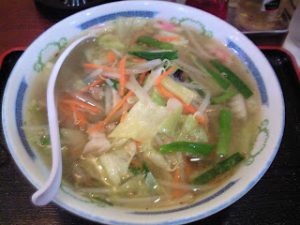
ワンタンメン Wantan-men
Wantan-men has long straight noodles and wonton, served in a mild, usually salt tasted soup.
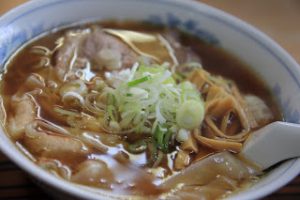
油そば Abura soba
Abura soba (“oil-noodles”). Essentially ramen and toppings served without the soup, but with a small quantity of oily soy-based sauce instead.
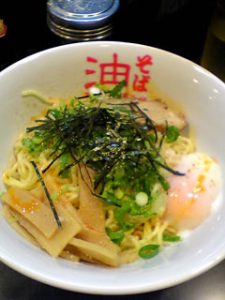
Thank you.
ODEN recipe
ODEN is a Japanese cuisine especially suitable for winter.
It is a type of Japanese stew or a sort of hodgepodge.
A variety of ingredients such as Boiled eggs, Daikon (Japanese radish), Chikuwa (fish paste rolls),Konnyaku (solidified jelly made of konjac potato) and soy-flavored Dashi Broth. The type of ingredients and Dashi Broth vary depending on the area and owner making ODEN.
The following is a recipe of ODEN using a liquid seasoning Kappo Dashi.
Product Name: DonDon Series Kappo Dashi 1L
Ingredients : Light-colored soy sauce, Dried bonito, Salt, Sugar, Mirin, Sake, Dried sardine, Hydrolyzed fish protein, Dried bonito extract, Hakkochomiryo, White soy sauce, Kombu (Dried seaweed),Dried mackerel, Shiitake mushroom,Amino acid (sodium Glutamate), Shusei(ethyl alcohol), Acidulant
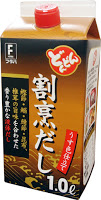
Expiration : 1year from manufacturing date
Produced by FUTABA Co., Ltd.
<Ingredients_4 servings>
Kappo Dashi・・・・・・・100ml
Water・・・・・・・・・・1,300ml
Daikon Japanese radish・・・・・・・・・1/4 sticks
(cut into 2㎝ thickness and parboil)
Satsuma-age deep-fried fish paste・・・・・・ 4 pieces(pour hot water and reduce excess oil)
Ganmodoki deep-fried tofu・・・・・・・・・4pieces(pour hot water and reduce excess oil)
Chikuwa fish paste rolls・・・・・・・・・・ 2sticke(cut diagonally into a bite size)
Hanpen white boiled fish paste・・・・・・・ 1cake(cut into 1/4 triangle shape)
Other preferred ingredients such as boiled egg, satoimo(taro), and octopus legs
<How to Cook>
① Combine Kappo Dashi and water in an earthenware pot bring it to boiling.
② Add all the ingredients and bring it to boiling. Turn the heat down to low and cook until ingredients are seasoned thoroughly.
See you later.
Various kinds of ramen part-1
Iekei ramen is a ramen noodle bar chain originating from a ramen bar called “Yoshimura-ya” located in Yokohama, Japan. The name “Iekei” literally means “house-type” from the kanji “家”. The chain uses pork and soy sauce as the base for their soup, and thick, flat noodles. The bowl usually comes with slices of roast pork, nori seaweed, and spinach, but there are other variations such as eggs, the number of pork slices, and the amount of seaweed.
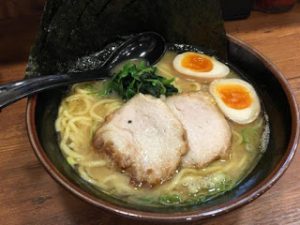
Tsuke-men (“dipping noodles”). The noodles and soup are served in separate bowls. The diner dips the noodles in the soup before eating. Can be served hot or chilled.
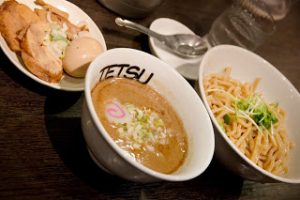
Curry ramen is a curry flavor ramen noodle dish that is provided at many ramen restaurants in the cities of Muroran, Noboribetsu, Date, and Tōyako in Hokkaido, Japan.
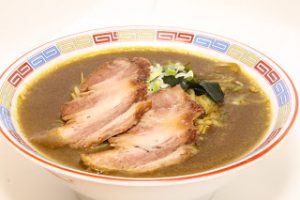
Chanpon is a noodle dish that is a regional cuisine of Nagasaki.
The noodles are thicker than ramen but thinner than udon.
Champon is topped with a variety of ingredients, mostly seafood, a soup made with chicken and pig bones is then added, stir-fried and dressed in a starchy sauce.
The stir-fried ingredients are poured directly over the cooked noodles, with the sauce acting as a soup.
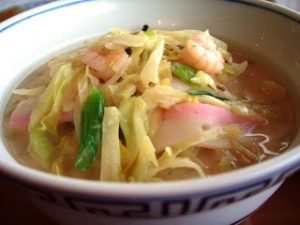
Tank you.
Nanakusa-Gayu (Rice porridge with seven spring herbs)
Happy New Year 2017
I’ll show a traditional new year’s dish this time.
Nanakusa-Gayu is Japanese event food to eat on the morning of January 7
It was introduced from China and started over 1000 years ago.
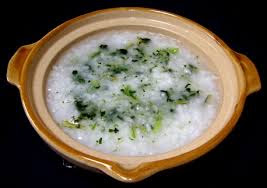
It is used for seven kinds of herbal gruel which recover from the tired stomach with drinking too much for New Year Holiday. In addition, eating Nanakusa-Gayu means such as happiness, prosperity and long-lived life.
Not all seven spring herbs are used in the Nanakusa-Gayu, but the ingredients may also differ depending on the region. It is added root vegetables, fried tofu, chicken and others. In any case, it is a light taste.
The following are seven spring herbs.
Seri (Water dropwort)
Nazuna (Shepherd’s purse)
Gogyo(cudweed)
Hakobera (Chickweed)
Hotokenoza (Henbit)
Suzuna (Turnip)
Suzushiro (Japanese radish)
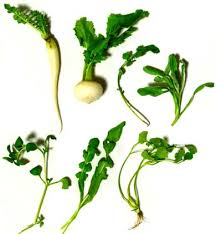
I hope you will have a great year.
Shio ramen
Shio (“salt”) ramen is a pale, clear, yellowish broth made with plenty of salt and any combination of chicken, vegetables, fish, and seaweed.
This salty broth is considered the oldest of the ramen broths.
In fact, shio translates to “salt,” and sea salt is considered the oldest form of ramen seasoning.
Flavor is simple but rich.
Occasionally pork bones are also used, but they are not boiled as long as they are for tonkotsu ramen, so the soup remains light and clear.
Chashu is sometimes swapped for lean chicken meatballs, and pickled plums and kamaboko (a slice of processed fish roll sometimes served as a frilly white circle with a pink or red spiral called narutomaki) are popular toppings as well.
Noodle texture and thickness varies among shio ramen, but they are usually straight rather than curly.
Hakodate style Shio ramen
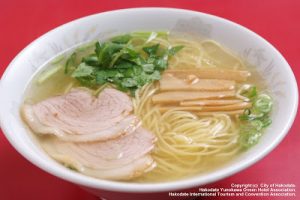
Hakodate style ramen is usually made with chicken broth resulting in a golden coloured soup.
Very often Hakodate Ramen comes with chicken meatballs.
Hakodate is where the tradition of making ramen soup flavoured with salt has remained unchanged even as new flavours and styles were introduced all over Japan.
Thank you.
Tonkotsu ramen
Tonkotsu (pork bone) ramen usually has a cloudy white colored broth. It is similar to the chinese paitan soup and has a thick broth made from boiling pork bones, fat, and collagen over high heat for many hours, which suffuses the broth with a hearty pork flavor and a creamy consistency that rivals milk, melted butter or gravy. Most shops, but not all, blend this pork broth with a small amount of chicken and vegetable stock and/or soy sauce.
The noodles are thin and straight, and it is often served with beni shoga (pickled ginger). In recent years the latest trend in tonkotsu toppings is māyu (sesame oil), a blackish, aromatic oil made from either charred crushed garlic or Sesame seeds.
Tonkotsu ramen is originated in Kyushu and is very popular.
Hakata ramen (Fukuoka, Kyushu)
It is a specialty of Kyushu, particularly Hakata-ku, Fukuoka.
Usually uses a lightly flavored white soup made from boiled pork bones and vegetables, and very thin, straight noodles.
Many shops offering tonkotsu ramen (noodle with a thick broth made from boiling pork bones) including Hakata ramen shops prepare takanazuke stir-fried in oil with red pepper to top ramen with.
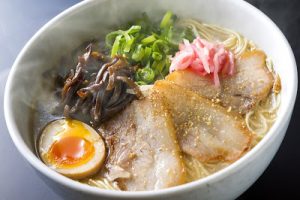
Kurume ramen (Fukuoka, Kyushu)
Said to be the origin of ramen noodles in Kyushu, its trademark cloudy white pork-based soup has a renowned unique flavor and richness, and the taste is second to none.
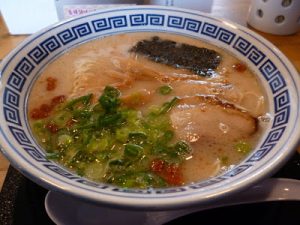
Kumamoto ramen (Kumamoto, Kyushu)
A very rich, white soup is made from a mixture of pork bone stock and chicken stock.
It is considered a derivative of the thick type owing to its distinct sweet and thick soup which is mixed with chicken bone.
A medium sized,straight noodle is usually preferred.
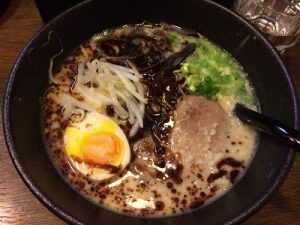
Kagoshima ramen (Kagoshima, Kyushu)
Its soup is mainly based on tonkotsu (pork bone broth). It is a little cloudy, and chicken stock, vegetables, dried sardines, kelp and dried mushrooms are added.
The size of the noodle is a bit thicker than normal. Compared with other local varieties of ramen, the size of the noodle and the taste of the soup are very different; each shop has separate recipes. It is served with pickled daikon.
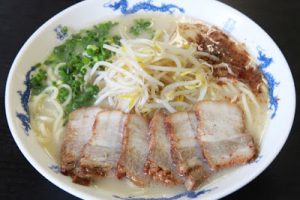
Thank you.
OSECHI-RYORI
Japanese traditional New Year’s Cuisine is called OSECHI-RYORI.
It is also simply called OSECHI.
People enjoy Osechi in the first 3 days of January.
It is cooked to keep for at least three days and women do not have to cook during the period. You will see many different and beautiful dishes set in a 3 or 4-tiered box which an overlay.
The diversity of Osechi means differently such as good health, harvest, happiness, prosperity, long-lived life and so on respectively.
For Example
Kuromame (simmered black soy beans) is for good health.
Tazukuri (candied dried sardines) is for good harvest.
Kurikinton (mashed sweet potato with sweet chestnuts) means improvement of luck with money.
Kazunoko (salted herring roe) symbolizes fertility.
Prawns symbolize long-lived life.
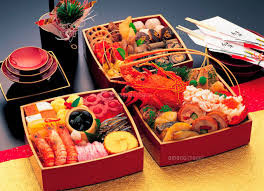

Well then, see you later.
Miso ramen
Soup stock for ramen may be made from seafood, chicken bones, pork bones or various other ingredients.
It is seasoned with soy sauce, miso, salt and other flavorings depending on the region.
This time I will introduce miso ramen.
Miso ramen is ramen noodles in a Miso based soup that was created in Japan in the 1960s.
Miso ramen soup is flavored with soybean paste, resulting in a thick soup with a rich flavor.
Flavored with pork and chicken broth with a mix of toppings such as chashu, ramen egg, sweet corn kernels, nori sheet, this bowl of noodles is going to satisfy your craving.
Famous miso ramen…
Sapporo ramen
Miso ramen seasoned with hot and spicy miso and garlic.
The ramen noodles are boiled in a soup with vegetables that have been fried in plenty of lard and garlic.

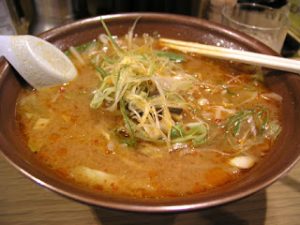
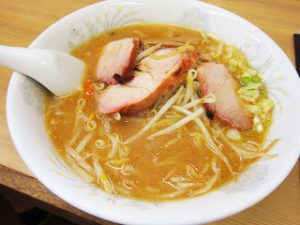
Thank you.



